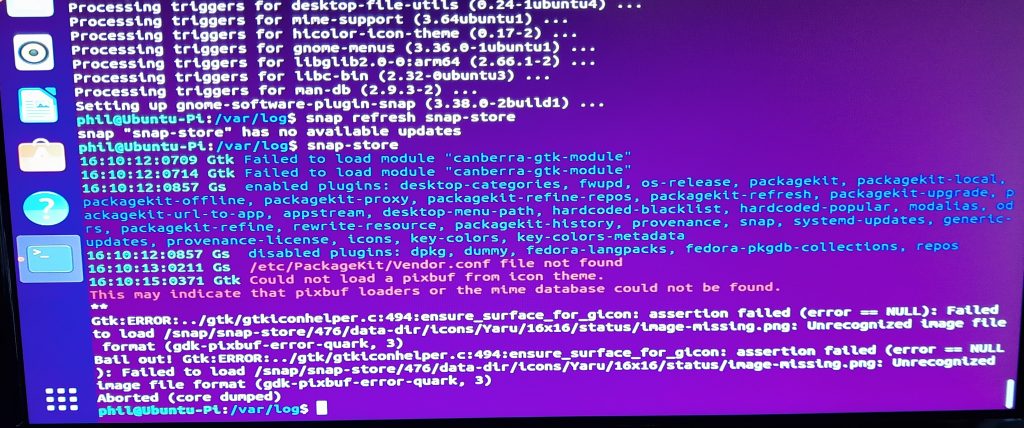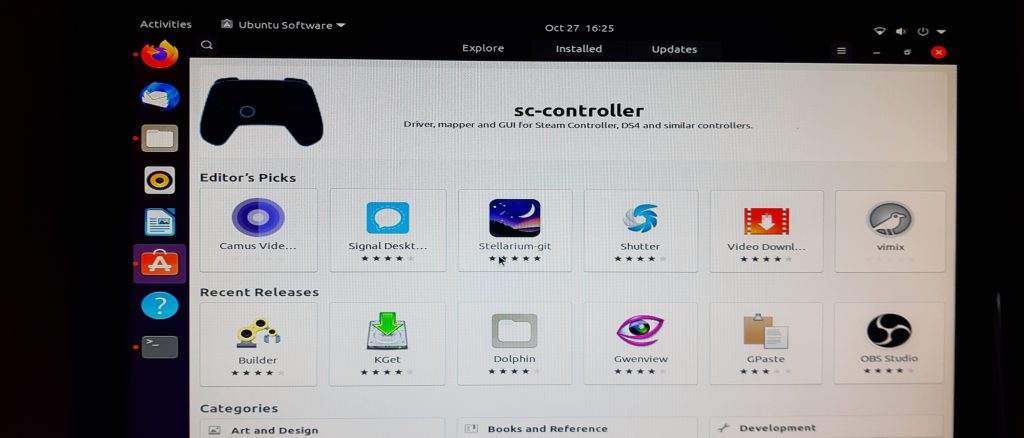…would make a brilliant title for a children’s book, unfortunately this is about my experience with Ubuntu 20.10 Desktop on the Raspberry Pi 4.
I had a few spare minutes to try out the latest release of Ubuntu, in fact a few minutes was all I needed as the flash onto SD card was slick due to being included in the Raspberry Pi imager. On booting the installation and setup were just as slick, and what you would expect from a modern Linux distribution, and within 20 minutes I was at the GUI.

I have been using the 64-bit version of the Raspberry Pi OS for the past few months, and while it gives me most things I need, I’m ashamed to even say it, but it’s not the prettiest. Yes I know Linux makes a great server, I have many running in the house, (just ask my wife, when she discovers another flashing box!). However for a desktop I really want a GUI, I want to point and click and what’s wrong with a few fancy animations here and there. Again yes, I know I could do something about it and customise to my own needs, but quite frankly, I would rather be using the Pi for the reason I fired it up for in the first place.
Anyway I had big hope for the latest version of Ubuntu 20.10 (Groovy Gorilla) as it has just been certified for the RPi 4. After a few minutes of use, I kept getting a notification about a network disconnect, which seemed strange as I was using WiFi, and browsing seemed uninterrupted.

Firing up a terminal and looking through the syslog, I could see this error was actually relating to eth0, which is easily fixed by disabling, but seemed a bit overkill to pop up a message about it every minute or so.
I then tried to fire up the store to install some software, yes I could have used apt, but again I want it presented to me in a nice graphical format. When the store didn’t open I tried it again, and again, and maybe a few more times after that.
Back into the terminal, checking everything was upto date I tried to launch the shop from the CLI and was presented with a few errors and a core dump. At least I could Google the errors, unfortunately the posts I found related mostly to the previous gnome-software store.

I came across one post however which mentioned using snap to remove the snap-store then reinstall, using…
sudo snap remove snap-store
sudo snap install snap-storeHey presto, on clicking the icon on the desktop, the store launched this time.

What I will say, is the build is a little clunky and can be slow to load applications such as Firefox, in all fairness, the 8GB version of the RPi 4 is recommended, and I’m using the 4GB version. I’m also running off a micro SD card, although A1 class, I wanted to try it out before moving the install onto NVMe or SSD and booting off USB, at which point I would expect the performance to increase.
I’m going to give Groovy Gorilla a little more time, to give the benefit of the doubt, but the whole issue with the snap-store was not great especially as a completely fresh install. It only wasted a few minutes trying to diagnose and resolve, but could be something that might put an inexperienced user off. That being said I would probably have expected more forum posts about the issue if it had affected more RPi users, maybe I’m just lucky.
Stay tuned for more Gorilla updates, hopefully I will have figured out screenshots by then rather than taking pics with my phone!